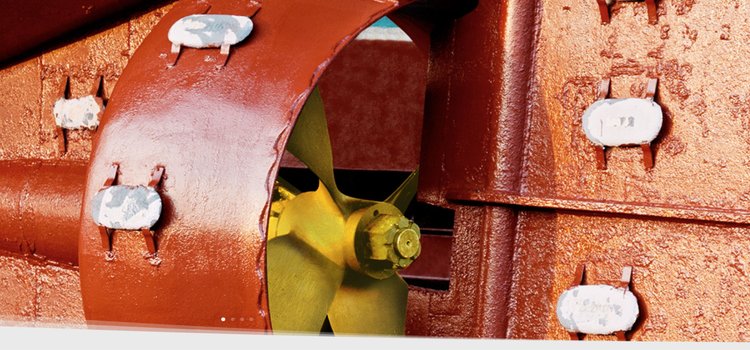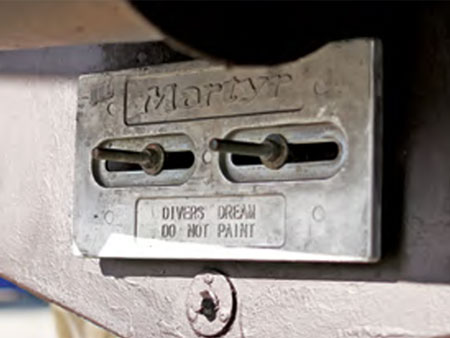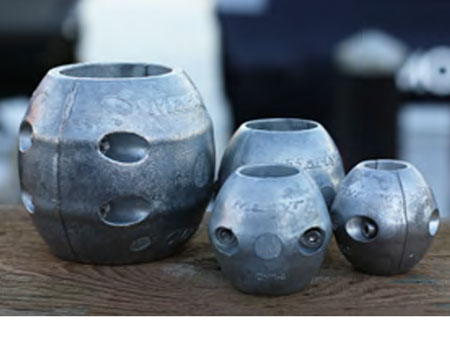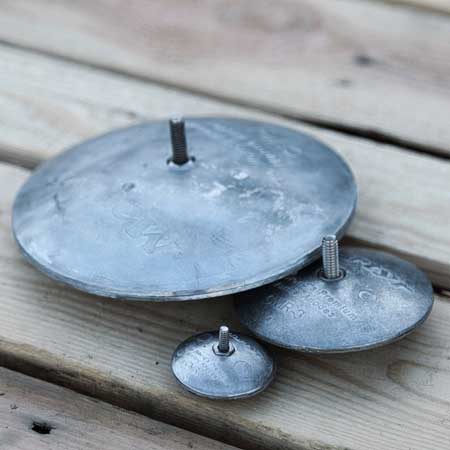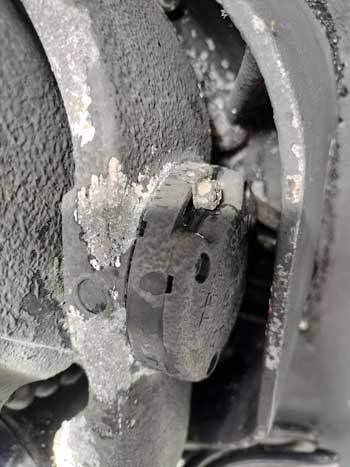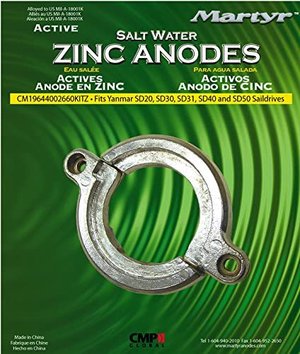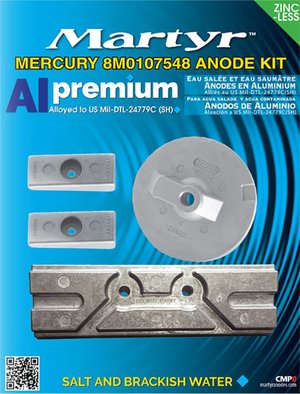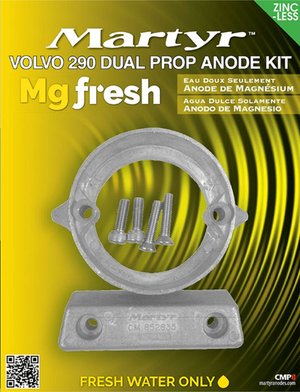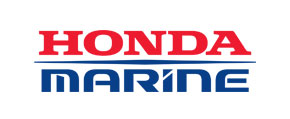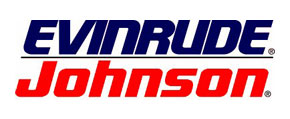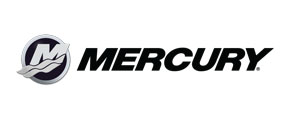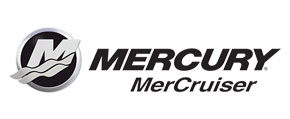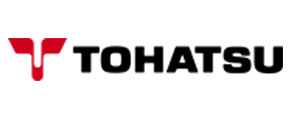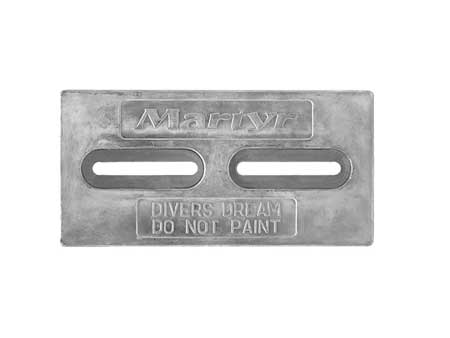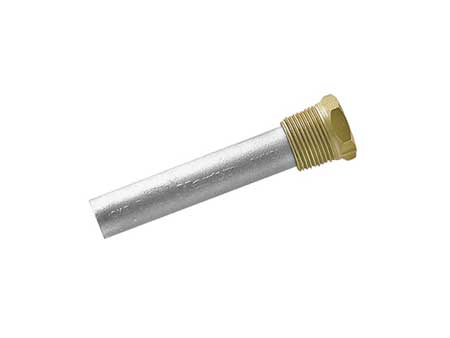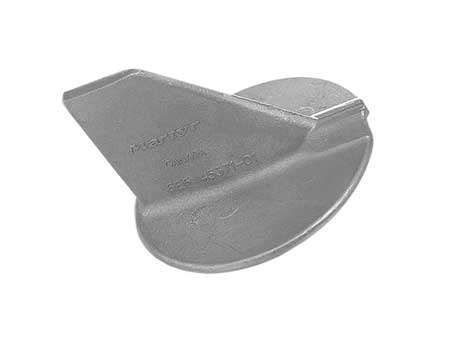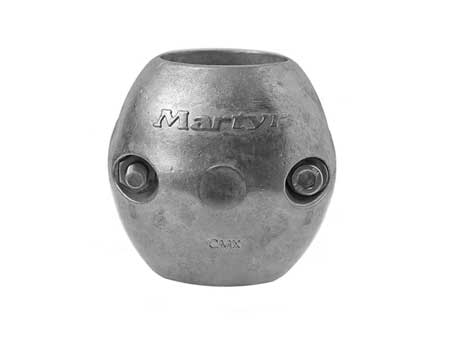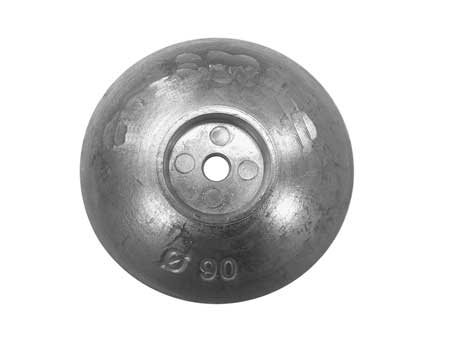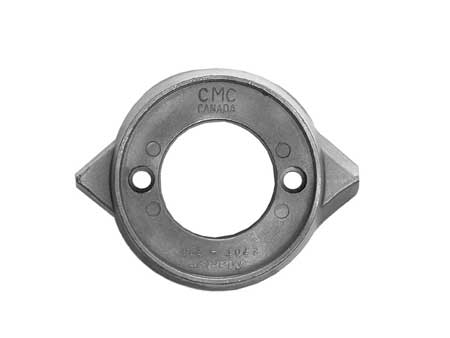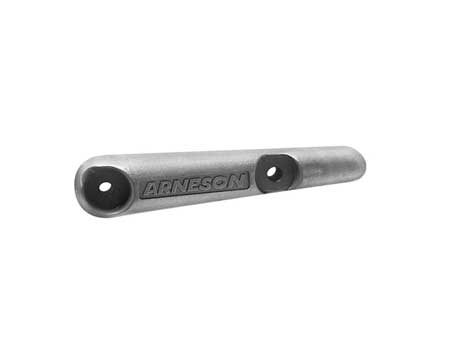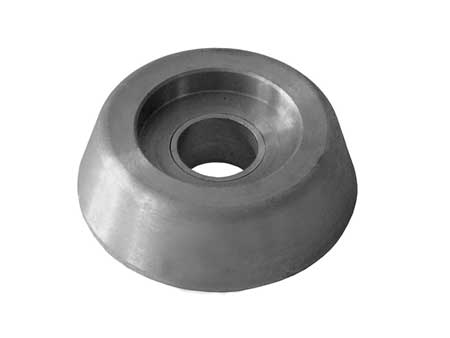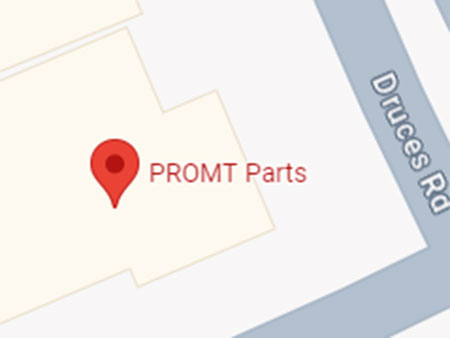- Home
- Cart
- Browse Products
- Catalogues
- Arco Marine
- Athena
- BEP Marine
- Bob's Machine Shop
- CDI Electronics
- Champion Spark Plugs
- Evinrude Accessories
- GB Remanufacturing
- JB Weld
- Jaltest Diagnostics
- Kicker Audio
- Martyr Anodes
- Mercury Accessories
- NGK Spark Plugs
- Narva Marine
- Shields Fuel Hose
- Solas Propellers
- Suzuki Accessories
- Volvo/Yanmar Parts (CROM)
- Wiseco Pistons
- Technical Resources
- Parts Diagrams
- Product Information
- Promotions
- PROMT News
- Prop Finder
- Video Library
- About Us
- Contact Us
- Find Us on Social

Marine Anodes for Effective Cathodic Protection | Martyr Anodes
|
Welcome to PROMT Parts, your reliable distributor of high-quality and cost-effective marine cathodic protection solutions. Our Martyr Anodes offer exceptional performance in safeguarding boats, marine structures, and boat equipment from corrosion. Crafted from a specialized alloy based on the US Mil Spec and composed of high-purity metals, our Martyr Anodes, commonly referred to as "Boat Zincs," provide unparalleled protection in saltwater, brackish water, and freshwater environments. |
Martyr anodes are meticulously pressure die-cast and manufactured to the highest standards through an ISO 9001 Quality Management system, guaranteeing compliance with US Military Alloy Specifications. Our product range includes sacrificial zinc anodes, aluminium anodes, and magnesium anodes, all proven to prevent boat corrosion that leads to pitting on hull plates, rudders, and bilge keels. Additionally, Martyr anodes effectively protect critical components such as propellers, shafts, shaft brackets, stern tubes, engines, and rudders. For your convenience, we provide comprehensive anode kits that include all necessary installation hardware and detailed instructions.
Marine Corrosion: Threats to Your Boat and How to Stop Them
|
Saltwater is a harsh environment for metals on your boat. Two main types of corrosion can lead to costly repairs and shorten your boat's lifespan: galvanic corrosion and stray current corrosion. Galvanic Corrosion: The Silent Threat
The Importance of Proper Anode Selection and Maintenance: For optimal protection, it's crucial to choose the right anode type and size for your boat and water conditions. We offer a variety of anodes to suit different needs. Regularly inspecting and replacing anodes as they wear away is essential for maintaining corrosion protection. Our Silver/Silver Chloride Reference Electrodes are specifically designed for measuring and confirming your Anodes are providing the right level of Cathodic Protection for your boat. Stray Current Corrosion: Electrolysis
By using a combination of sacrificial anodes and stray current monitoring with silver chloride reference electrodes, you can significantly reduce corrosion and extend the life of your boat. |
Hull Anodes:
|
Prevent marine and offshore corrosion effectively with Zinc or Aluminium Anodes, the efficient solution for cathodic protection. Saltwater, akin to a chemical soup, gradually causes a steel hull to rust away due to the corrosive nature of salt ions. Zinc anodes, known for their high activity on the electrolysis chart, sacrificially corrode before the steel does. Replacing worn-out anodes is far easier and exponentially more affordable than replacing an entire steel hull. Regular inspection and replacement of boat anodes are crucial to prevent hull damage. Sacrificial Anodes, made of metals more reactive than the ship's body and systems, are electrically linked to the ship's hull, shielding it and its components. The name "Sacrificial Anodes" reflects their protective role. Zinc, commonly used due to its higher voltage in water, ensures that the current flows more readily from it than from the propeller. Anodes are bolted directly onto the boat's hull, completing the electrical circuit. At PROMT Parts, we offer a range of Hull Anodes to safeguard your investment effectively.
|
Shaft & Propeller Anodes:
|
To achieve optimal protection, the surface area of an anode must be proportionate to the surface it aims to protect. Installing shaft anodes can be challenging due to shaft design. Here are essential tips for proper installation:
Shop for Shaft and Propeller Anodes
|
Rudder & Trimtab Anodes:
|
For stainless steel rudders, it is recommended to fit a disc anode on each side. PROMT Parts offers various options ranging from heavy-duty to regular sizes for this purpose. Use stainless steel fittings whenever possible, or zinc galvanized studs as an alternative, ensuring they match the stainless steel grade. If using pairs of discs, check the length of the fixing bolt to ensure it passes through the rudder adequately. For trim tabs, fit anodes on the top side, and consider increasing the anode size if the surface area exceeds 1 square meter. Remember that surface area, in addition to weight, is crucial. You can verify your configuration using a multi-meter. Choose PROMT Parts for high-quality marine anodes and experience effective cathodic protection for your valuable investment.
Shop for Rudder and Trim Tab Anodes
|
What is Cathodic Protection? How do I know I am Protected?
|
Cathodic protection is an electrochemical process that thwarts the natural corrosion reaction of metals within specific environments. This is achieved by introducing a more potent electrochemical cell than the existing corrosion cell. Sacrificial anodes are strategically placed or bonded to the metal requiring protection. As the anode material possesses higher electrical potential compared to the protected metal, it adopts a cathodic role, leading to the corrosion of the anode itself. In a well-implemented Martyr Cathodic Protection System, the sacrificial anode is the sole component that undergoes corrosion and can be easily replaced. The quantity and size of anodes are determined by factors like material type and the surface area in need of safeguarding. Bonding involves connecting the anode to a distant metal element, such as a propeller shaft or rudder stock. Ensuring the integrity of this bonding is vital for the effectiveness of the cathodic protection system. The selection of an appropriate cathodic protection system hinges on various factors including the vessel's operating environment, dimensions, construction type, and the interval between maintenance or slipping periods. Can I Test My Anodes? Absolutely, evaluating whether your vessel and valuable submerged metals are adequately shielded holds utmost importance in your corrosion protection strategy. Neglecting anode testing leaves the protection of your boat and equipment to guesswork. Without effective cathodic protection, underwater metals such as Sterndrives can deteriorate within weeks or months. PROMT Parts offers cost-effective high precision reference electrodes, facilitating straightforward verification of your anodes' functionality. Do not overlook this critical step in your battle against corrosion.
Click here : how to test anodes
|
ZINC, ALUMINIUM OR MAGNESIUM?
Boats rely on sacrificial metals called marine anodes to combat corrosion. These strategically placed anodes corrode preferentially, protecting your boat's hull and other submerged components. Choosing the right anode type depends on your sailing environment.
|
ZINC ANODES (TRADITIONAL)
|
|
ALUMINIUM ANODES (PREMIUM)
|
|
MAGNESIUM ANODES (FRESH WATER)
|
Shop for Anodes by Brand
Shop by anode type
Understanding Anodes: Preventing Corrosion in Watercraft
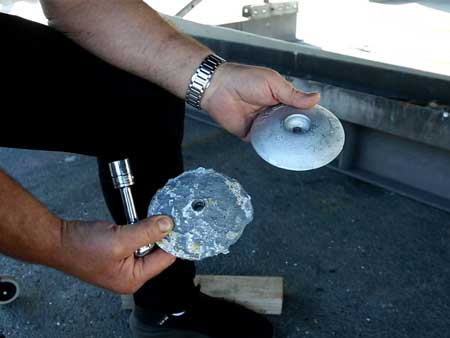 Corrosion poses a significant risk to any watercraft, whether it operates in fresh, salt, or brackish water. The consequences of corrosion can be financially burdensome. Corrosion occurs in all types of water and can have devastating effects. When different metals come into contact with each other, they form Galvanic cells due to their varying electrochemical potentials. The metal with a lower potential in the galvanic cell becomes anodic and corrodes. This corrosion can also occur within a single piece of metal, such as a steel plate, if there are areas of different electrochemical potential.
Corrosion poses a significant risk to any watercraft, whether it operates in fresh, salt, or brackish water. The consequences of corrosion can be financially burdensome. Corrosion occurs in all types of water and can have devastating effects. When different metals come into contact with each other, they form Galvanic cells due to their varying electrochemical potentials. The metal with a lower potential in the galvanic cell becomes anodic and corrodes. This corrosion can also occur within a single piece of metal, such as a steel plate, if there are areas of different electrochemical potential.
Identifying corrosion on steel and aluminium vessels involves looking for localized pitting on the hull plate, rudders, bilge keels, etc., or general wastage of the hull plating, which often occurs beneath the paint coating. Pitting can lead to complete penetration of the hull below the waterline, while general wastage weakens the hull and requires expensive re-plating.
Corrosion on aluminium vessels typically appears as localized pitting on the hull plate, rudders, bilge keels, and weld seams. Pitting can result in complete penetration of the hull below the waterline, necessitating costly re-plating.
On wood and GRP (Glass-Reinforced Plastic) vessels, the stern gear is of primary concern. This includes propellers, shafts, shaft brackets, stern tubes, and rudders. Damage or failure of these components can have catastrophic consequences. Corrosion effects can range from pitting of propellers and shafts to decomposition of the propeller alloy. Even a small and inexpensive component like a split pin can cause the loss of a propeller.
While stray current leakage is often blamed for corrosion on all types of vessels, more commonly, the problem can be attributed to galvanic action. Stray current leakage occurs when electrical current from an external power source, such as a battery or shore power supply, passes through the hull or a fitting in the hull due to an electrical system fault on board. This current flow in the water causes "electrolytic" corrosion. Stray current leakage typically arises from wiring system damage or wear, as well as poor installation of wiring or electrical equipment.
To prevent corrosion, careful material selection is crucial during the construction of a watercraft. Naval architects and boat builders aim to choose metals that are compatible with each other whenever possible. When compatibility is not achievable, metals must be isolated from one another.
During replacements or repairs of fittings or steelwork, attention must be given to the same criteria. It is particularly important to ensure that fastenings and split pins are of high quality and compatible. The paint system used on a boat acts as the first line of defense against corrosion. Seek advice from paint manufacturers regarding the most suitable coating system, and meticulously follow the application instructions. If anti-fouling is used, apply a good anti-corrosive primer and avoid directly applying copper-based anti-fouling paint on bare metal surfaces.
Vegetable oil-based paints, although less common nowadays, should not be used with cathodic protection systems, as the paint tends to saponify.
Proper electrical installation on a boat reduces the likelihood of stray current leakage. Follow these recommendations:
- Use only high-grade insulated wiring of sufficient capacity to avoid resistance and voltage drop.
- Clip or support wires at suitable intervals to prevent fatigue and eventual fracture.
- Utilize corrosion-resistant terminals and connectors, ensuring they are clean and tightly connected.
- Attach only the main battery leads to battery terminals.
- Install an isolation switch in the battery circuit.
- Ensure correct fusing of all battery circuits.
- Keep all wiring, connections, and junction boxes above areas that may become wet, such as the bilge.
- Adhere to the manufacturer's instructions when fitting additional equipment, ensuring correct polarity and proper fusing of each circuit.
- For electrical and electronic work, it is best to consult a qualified marine electrician.
- Regular maintenance is essential for preventing corrosion on your boat. Conduct regular inspections of metalwork, paint coatings, and electrical installations. If you own a steel vessel, pay particular attention to the wind and waterline area, as it is vulnerable to mechanical damage and lacks protection from an anode system, which is typically located above the waterline.

